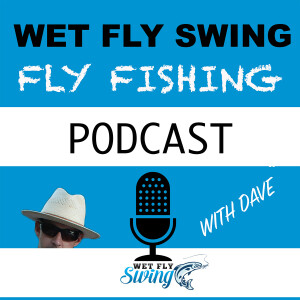
Wet Fly Swing Fly Fishing Podcast
Sports:Wilderness

WFS 503 - Fly Fishing Henry's Lake with Phil Rowley - Stillwater, Mayflies, Golden Dorado
 2023-09-18
2023-09-18
Show Notes: https://wetflyswing.com/503
Presented By: Yellowstone Teton Territory, Jackson Hole Fly Company, Bearvault, Chota Outdoor Gear
Phil Rowley joins us today to share his wealth of knowledge on Stillwater, this time zeroing in on the art of fly fishing Henry's Lake. We're gearing up for an exciting event where a lucky winner will snag a trip to this area, along with a handpicked selection of top-tier gear.
Our stillwater guru also provides updates on his upcoming adventures, including trips to Argentina in pursuit of giant rainbows and Golden Dorado. Plus, find out the three key factors Phil considers when fishing a new lake.
Fly Fishing Henry's Lake with Phil Rowley.
02:50 - Phil Rowley provides an update on his busy schedule, which includes early-year commitments to fly fishing and outdoor shows. He also mentions an upcoming trip to fish giant rainbows in Argentina's Jurassic Lake and a unique opportunity to chase Golden Dorado.
03:37 - Phil hosts trips to Argentina in partnership with Estancia Laguna Verde. The lodge owner also owns Golden Dorado River Cruisers, which operates a luxurious refurbished houseboat for cruising along the Parana River.
11:25 - Phil's initial visit to the Island Park area was for an episode he filmed alongside Bob Jacklin for the New Fly Fisher. They primarily focused on river fishing. However, he did spend one day on Hebgen Lake.
14:00 - Hebgen Lake is known for its abundance of Callibaetis hatches, particularly in August. Unlike many lakes that experience a summer slowdown with trout going deep due to reduced oxygen content, Hebgen Lake, situated at a higher elevation in the West Yellowstone area, offers excellent dry fly fishing opportunities during this month.
17:00 - Callibaetis is one of the few Stillwater-based mayflies out there. It's from the swimming nymph family. Unlike many mayflies, which are not commonly found in lake environments due to the lower oxygen levels, Callibaetis have external gills.
18:15 - Another mayfly you might run into in lakes is the Hexagenia limbata.
22:00 - Phil Rowley provides insights into the contents of his fly box when fishing in the Henry's Lake area.
28:00 - The washing line setup is a multi-fly arrangement where you position the buoyant fly on the point, farthest from the fly line, and then hang one or two flies off independent droppers.
Stillwater Giveaway
32:49 - Just a quick shout-out to the giveaway we have going on right now. You can visit wetflyswing.com/giveaway where we're offering a trip and a bunch of gear related to this area.
Additionally, we're working on organizing a live event where you can get more information on the topics we're discussing today, and we'll have Phil there to answer questions. Keep an eye on wetflyswing.com/live for more information.
Phil Rowley's Fly Patterns
33:00 - Phil highlights a couple of fly patterns for each category. Phil has a pattern called the Holo worm. It is a curved scud hook, and a little red Marabou tail to suggest a wiggling larvae.
Another great option is Jerry McBride's "Bionic Worm." This pattern features a fluorescent pink tail, a red body, and a hot orange bead for added visibility.
35:00 - Other flies in the pupal stages are your basic black and red chironomid.
36:00 - Phil's Collaborator pattern's burnt orange coloration with a red butt is designed to mimic the presence of residual hemoglobin in the pupa.
Tips When Fishing a New Lake
41:00 - Phil emphasizes the importance of prior research when fishing a new lake. He suggests checking online resources, including Facebook groups, forums, and fishing reports from local fly shops.
3 Things to Look for in a Lake
Comfort - Comfort for trout is primarily determined by water temperature and its relation to oxygen content. Phil looks for temperatures between 50 to 65 degrees Fahrenheit.
Protection - Protection factors give trout confidence to feed. This includes rippled surfaces, algal blooms, and underwater structures like drop-offs, weed beds, points, rocky outcroppings, and sunken islands.
Food - Food sources are crucial, and Phil focuses on identifying hatches and where the bugs are most likely to be found.
Show Notes: https://wetflyswing.com/503
More Episodes
Create your
podcast in
minutes
- Full-featured podcast site
- Unlimited storage and bandwidth
- Comprehensive podcast stats
- Distribute to Apple Podcasts, Spotify, and more
- Make money with your podcast
It is Free
- Privacy Policy
- Cookie Policy
- Terms of Use
- Consent Preferences
- Copyright © 2015-2024 Podbean.com





